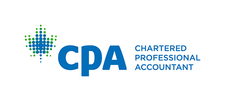A financial forecast is an important component in helping your business reach its goals.
You may understand quite a bit about where you stand today. You might know your historical data and the current state of your finances. Possibly you’ve identified a number of ways to increase your profitability. But if you aren’t using a financial forecast, you’re missing out on one of the top tools for setting business goals and monitoring your progress toward them.
A financial forecast tells you what revenues and expenses you can expect for a given period of time, for example, the year 2022.
It’s not a pie-in-the-sky wish of what you would like to achieve. Instead, it’s a realistic projection of what you can reasonably expect to happen given the way you run your business today. It’s a valuable measuring stick both for setting goals and for tracking actual results against the goals.
Use Your Financial Forecast to Set Your Goals
Financial forecasting isn’t exactly the same as budgeting, although the difference between the two is subtle, and they’re generally used together.
A budget lays out what the business hopes to accomplish in terms of revenue and expenses, while a financial forecast is what the company should expect to happen given historical performance and its current business trajectory.
With a financial forecast in hand, you can create expense and revenue budget targets that are more ambitious than the forecast, and you can develop ways to achieve your budget goals.
Let’s Look at an Example
Suppose you are reviewing your cash flow. Your financial forecast will tell you where your cash flow will be at the end of the year if you stay on your current course. After analyzing, you decide you’d be more comfortable with a stronger cash flow. So you set a goal to raise your cash flow.
Goals should always be SMART. That is, they should be:
- S – specific
- M – measurable
- A – attainable
- R – realistic
- T – timely
There should be dollar amounts or percentages tied to your cash flow goals this way you know exactly what benchmark you are aiming to reach and you can measure your progress throughout the process.
Be sure your newly set goals are within reach. Setting goals that are too far above your forecasted measures often lead to failure.
Once you get started, you can continue setting goals for revenues and expenses as well as non-dollar goals such as adding new customers and customer retention. You should arrive at a budget that seeks improvement over the status quo but is still within reach.
Use Your Financial Forecast To Measure Your Progress
Once you’ve employed your financial forecast and your budget to set your goals, you can use your forecast to assess how well you’re doing. This assessment can actually help you reach your goals.
Your forecast tells you how you can expect to do if you maintain your present course. If you modify that course, the financial forecast could change. Six months, three months, or even a month from now, your forecast could give you numbers that are closer to those you hope to achieve.
If you’ve done a good job choosing changes in your business, your forecast numbers should be trending closer to your goals each time you run a forecast. If that’s the case, congratulations! You’ve been successful in implementing the steps to reach your goals. If you’re not getting any closer, or if your forecasts are moving in the wrong direction, you may have to make adjustments to get back on track.
Of course, there may not be anything you’re doing wrong as a small business owner. There might be hiccups in the economic environment that make it more difficult to increase revenues or keep expenses under control.
However, even in a difficult business climate, financial forecasting will give you a picture of where you stand. It might even suggest some improvements to help you cope with the difficulties.
Work Closely with an Accountant
Financial forecasting can be challenging. Your forecast is only as good as the data you start with and the assumptions you make.
An accounting partner such as Argento CPA can help guide you through the process. We’ll look at the data you’re using and assess its accuracy. We’ll help you generate a financial forecast based on your history and your current financial status. Once you have that, we can work together to set realistic goals based on the forecast, the business climate, and your aspirations for your business.
We’ll continue to check in regularly with you as you track your progress, and we’ll help you identify the actions that are most likely to lead to success.
Contact Argento CPA and learn how an experienced accounting company can help you use financial forecasting to reach your goals.

